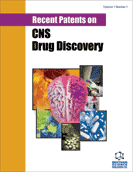Abstract
Several Voltage-Gated Sodium Channels (VGSC) are widely expressed on lymphocytes and macrophages but their role in immune function is still debated. Nevertheless, Na+ influx through VGSC is required for lymphocytes activation and proliferation, since these responses are blocked by Na+-free medium or by VGSC blockers. These effects may be mediated by the reduced intracellular Na+ levels, which in turn may impair the activity of Na+/Ca++ exchanger resulting in reduced intracellular Ca++ levels during lymphocyte activation. Furthermore, in Jurkat cell line VGSC appear to be involved in cell volume regulation, migration in artificial matrix and cell death by apoptosis. VGSC play a role in macrophage function as well, and VGSC blockers impair both phagocytosis and inflammatory responses. Several VGSC blockers have shown immunomodulatory properties in mice models, skewing the immune response toward a Th2- mediated response, while suppressing Th1-mediated responses, and VGSC already used in clinical practice are known to modulate immunoglobulin (Ig) levels both in mice and in humans. These effects suggest that VGSC blockers may find clinical application in the treatment of autoimmune and inflammatory disease. However, many of these drugs induce a number of severe side effects. The relevance of VGSC function in immune regulation suggest that the testing of newly patented VGSC blockers for their effect on immunity may be worthwhile.
Keywords: Antibody isotypes, immunomodulation, phenytoin, T-helper 2 cells, voltage-gated sodium channel
Recent Patents on CNS Drug Discovery (Discontinued)
Title: Voltage-Gated Sodium Channel Blockers as Immunomodulators
Volume: 1 Issue: 1
Author(s): Francesco Roselli, Paolo Livrea and Emilio Jirillo
Affiliation:
Keywords: Antibody isotypes, immunomodulation, phenytoin, T-helper 2 cells, voltage-gated sodium channel
Abstract: Several Voltage-Gated Sodium Channels (VGSC) are widely expressed on lymphocytes and macrophages but their role in immune function is still debated. Nevertheless, Na+ influx through VGSC is required for lymphocytes activation and proliferation, since these responses are blocked by Na+-free medium or by VGSC blockers. These effects may be mediated by the reduced intracellular Na+ levels, which in turn may impair the activity of Na+/Ca++ exchanger resulting in reduced intracellular Ca++ levels during lymphocyte activation. Furthermore, in Jurkat cell line VGSC appear to be involved in cell volume regulation, migration in artificial matrix and cell death by apoptosis. VGSC play a role in macrophage function as well, and VGSC blockers impair both phagocytosis and inflammatory responses. Several VGSC blockers have shown immunomodulatory properties in mice models, skewing the immune response toward a Th2- mediated response, while suppressing Th1-mediated responses, and VGSC already used in clinical practice are known to modulate immunoglobulin (Ig) levels both in mice and in humans. These effects suggest that VGSC blockers may find clinical application in the treatment of autoimmune and inflammatory disease. However, many of these drugs induce a number of severe side effects. The relevance of VGSC function in immune regulation suggest that the testing of newly patented VGSC blockers for their effect on immunity may be worthwhile.
Export Options
About this article
Cite this article as:
Roselli Francesco, Livrea Paolo and Jirillo Emilio, Voltage-Gated Sodium Channel Blockers as Immunomodulators, Recent Patents on CNS Drug Discovery (Discontinued) 2006; 1 (1) . https://dx.doi.org/10.2174/157488906775245255
| DOI https://dx.doi.org/10.2174/157488906775245255 |
Print ISSN 1574-8898 |
| Publisher Name Bentham Science Publisher |
Online ISSN 2212-3954 |
Related Books
 40
40Related Articles
-
Radix Paeoniae Rubra Ameliorates Lupus Nephritis in Lupus-Like Symptoms of Mrl Mice by Reducing Intercellular Cell Adhesion Molecule-1, Vascular Cell Adhesion Molecule-1, and Platelet Endothelial Cell Adhesion Molecule-1 Expression
Combinatorial Chemistry & High Throughput Screening Commentary: Perivascular Fat and Improved Vein Graft Patency in Patients Undergoing Coronary Artery Bypass Surgery
Current Vascular Pharmacology Vascular Inflammation During Human Rickettsioses: An Essential Host Response and a Potential Target for Supplemental Therapy
Anti-Inflammatory & Anti-Allergy Agents in Medicinal Chemistry Pentraxin 3 Serum Levels in Celiac Patients: Evidences and Perspectives
Recent Patents on Food, Nutrition & Agriculture Mechanisms Explaining the Influence of Subclinical Hypothyroidism on the Onset and Progression of Chronic Heart Failure
Endocrine, Metabolic & Immune Disorders - Drug Targets Shoulder Manifestations of Diabetes Mellitus
Current Diabetes Reviews Molecular Concept of Diabetic Wound Healing: Effective Role of Herbal Remedies
Mini-Reviews in Medicinal Chemistry Mechanisms of Neurodegeration in Type 2 Diabetes and the Neuroprotective Potential of Dipeptidyl Peptidase 4 Inhibitors
Current Medicinal Chemistry Anti-Tumor Necrosis Factor Blocking Agents in the Treatment of Systemic Vasculitis
Current Immunology Reviews (Discontinued) Ewing Sarcoma Family Tumors: Past, Present and Future Prospects
Current Cancer Therapy Reviews Cardiovascular Disease in Juvenile Idiopathic Arthritis
Current Vascular Pharmacology Radiolabeled Compounds in Diagnosis of Infectious and Inflammatory Disease
Current Pharmaceutical Design PPAR-γ Agonists in Polycystic Kidney Disease with Frequent Development of Cardiovascular Disorders
Current Molecular Pharmacology Mechanisms of Incretin Effects on Plasma Lipids and Implications for the Cardiovascular System
Cardiovascular & Hematological Agents in Medicinal Chemistry Therapeutic Neovascularization by the Implantation of Autologous Mononuclear Cells in Patients with Connective Tissue Diseases
Current Pharmaceutical Design Current Update on Eosinophilic Lung Diseases and Anti-IL-5 Treatment
Recent Patents on Anti-Infective Drug Discovery Arterial Ischemic Stroke in Neonates and Children: Review and Current Issues
Current Pediatric Reviews Pro-Inflammatory Gene Variants in Myocardial Infarction and Longevity: Implications for Pharmacogenomics
Current Pharmaceutical Design The Role of Venous Abnormalities in Neurological Disease
Reviews on Recent Clinical Trials Heerfordt-Waldenström Syndrome, A Rare Presentation of Sarcoidosis in a Patient with Old Ocular Toxoplasmosis
Infectious Disorders - Drug Targets






















